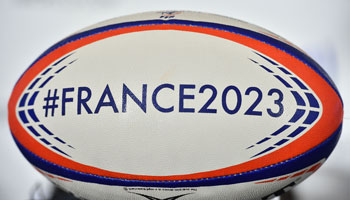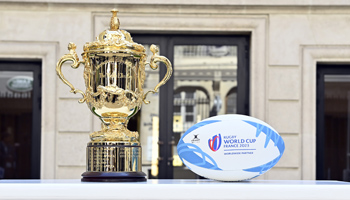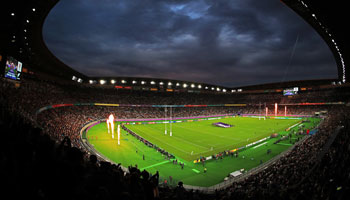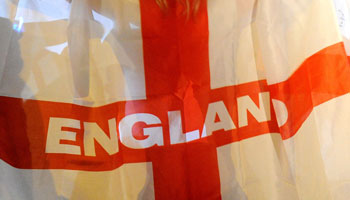bwin: What is the scoring system in rugby, and has this changed over the years?
James Jones: The scoring system has changed. It used to be 3 points for a try, after which it evolved to 4 points for a try. Then, another 10 or 15 years later, it became 5 points for a try. The reason for this was as follows. Since a conversion is worth 2 points, scoring a 4-point try would result in a total of 6 points, which also means that scoring two penalty kicks or drop goals would be worth the same amount of points as scoring a try. So, in order to make it clear that two penalty kicks couldn’t equate to a converted try, they increased the score for a try to 5 points . It currently stands at 5 points for a try, 2 points for a conversion after the try, 3 points for a penalty kick and 3 points for a drop goal.
Rugby scrum rules
bwin: Talking about scrummage: to laymen the scrum is one of the most mysterious aspects of rugby. Can you explain it for us? How many players are involved and what are their positions?
A scrummage is awarded, more often than not, after what is called a knock on, which is where a player drops a ball or when the ball goes forward, or when there is a forward pass. There are other ways, for example an accidental offside, but most of the time a scrum is awarded when the ball is dropped or goes forward. Or a restart of a game: if from a line out from the touchline, the ball is not thrown in straight – the referee will award a scrum.
Very basically, when a scrum is awarded, the players’ positions are as follows: numbers 1, 2 and 3 come together and lock arms, forming the front row. The two second rows behind them will position themselves between the legs of the 3 front-row players. 6 and 7 will then be at either side of those two players, and number 8 at the back. In total, eight players from each team are involved in a scrum. Both teams then crouch down and bind to each other. The scrum half will then put the ball in the middle of the scrum, then you will either see a pushing contest, where the strongest team pushes the other off the ball, or the number 2 of either side will attempt to catch the ball with their foot and drag it back to their side in order to regain possession.

Different rugby styles
bwin: As a referee who has lead many international games, can you say something about a different style of playing across the different nations?
James Jones: The gap is getting closer, but there are some different styles of play. In general, there are two different styles of play. You have a forwards-orientated games with big, strong, powerful players that will keep the ball close to them. They won’t pass it and neither will they play very fancy or attractive rugby. They allow the large, physical men to try and dominate the opposition. Traditionally, we see teams like New Zealand and South Africa doing this, Argentina, too, has had some big and strong players, as have the Islands – Fiji and Tonga.
The other side of play, then, is the attacking flair. This means teams that are running around and scoring tries. This style of play traditionally tends to come from the French. They are known for throwing the ball around and being very, very attractive. More recently, England has also started to throw the ball around more, developing a more attractive play style, and scoring tries with it.
Rugby betting
At bwin you can bet on all important rugby matches and tournaments, both local and international. Some betting possibilities:
* Outright winner
* Half-time/full-time result
* 3Way handicap
* Tries, and many more
Betting rules
Just like rugby and any other sport, betting has its rules, designed for maximum playing pleasure and fair play. Have a look at how we make betting on sports fun, fair and easy for everyone.













